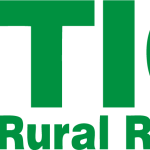Welcome to part seven of the column series on soybean micronutrients. The last couple of weeks I discussed boron, chloride, cobalt, copper, and iron. I will quickly cover how manganese (Mn) is essential to soybeans, known deficiencies and toxicities in the region, factors of manganese availability in soil, soil and plant tissue testing, and fertilizer recommendations. Micronutrients for Soybean Production in the North Central Region is a good regional publication that addresses manganese that I utilized as a resource for this news column.
In soybeans, manganese is a key micronutrient involved in photosynthesis, free radical protection, and symbiotic nitrogen fixation. Manganese is not very mobile within soybeans, so symptoms show up in new growth first. Manganese deficiency include symptoms of yellow leaves with green leaf veins, called interveinal chlorosis. These symptoms are very similar to iron deficiency, but there is no documented cases of manganese deficiency in southeast Nebraska soybeans. Soybeans are not very sensitive to manganese deficiency, unlike iron. Micronutrient issues are regional in nature, so just because manganese deficiency is common in some areas of the eastern Corn Belt, does not mean we should be concerned here in southeast Nebraska.
Soybeans take of the divalent form (Mn2+) of manganese from soil similar to other transition metal micronutrients like cobalt, copper, zinc. As soil pH increases above 7.0, availability does start to decrease and soil drainage/moisture and higher soil organic matter are contributing factors. Local research has shown that high levels of iron and zinc can reduce manganese uptake, not enough to cause any known problems or yield loss. Along with other routine soil test analysis like soil pH, the DTPA extraction method for manganese is helpful. DTPA manganese soil test values less than 3.0 ppm would suggest increased chances of a fertilizer response in soybeans. Because manganese has similar deficiency symptoms as iron, so soybean tissue analysis can be used to eliminate manganese as a cause. Taking the uppermost fully mature trifoliolate during full bloom, typically in early July is the best time. Learn more about how to conduct soybean plant tissue sampling by watching the video below. The manganese sufficiency range is 30 to 100 ppm in the tissue sample.
In northeast Kansas, EDTA-chelated manganese starter fertilizer actually decreased manganese uptake in soybeans. Contact me if you like soil chemistry and biology and want to chat about why this happened! In summary, I do not recommend manganese fertilization in a soybean fertility program in southeast Nebraska. If you are still concerned about manganese, I encourage you to conduct your own on-farm research through the UNL On-Farm Research Network by contacting me. I look forward to writing about molybdenum in next week’s column. You can share or read this news column online through my local website for Saline, Jefferson, and Gage counties at croptechcafe.org. Know your crop, know your tech, know your bottom line.


